History of Wayang Kulit

Wayang is a generic term denoting traditional theatre in Indonesia. There is no evidence that wayang existed before Hinduism came to Southeast Asia sometime in the first century CE. However, there very well may have been indigenous storytelling traditions that had a profound impact on the development of the traditional puppet theatre. The first record of a wayang performance is from an inscription dated 930 CE which says "si Galigi mawayang," or "Sir Galigi played wayang". From that time till today it seems certain features of traditional puppet theatre have remained. Galigi was an itinerant performer who was requested to perform for a special royal occasion. At that event he performed a story about the hero Bima from the Mahabharata.
Hinduism arrived in Indonesia from India even before the Christian era, and was slowly adopted as the local belief system. Sanskrit became the literary and court language of Java and later of Bali. The Hindus changed the Wayang (as did the Muslims, later) to spread their religion, mostly by stories from the Mahabharata or the Ramayana. Later this mixture of religion and wayang play was praised as harmony between Hinduism and traditional Indonesian culture. On Java, the western part of Sumatra and some smaller islands traditionalists continued to play the old stories for some time, but the influence of Hinduism prevailed and the traditional stories either fell into oblivion or were integrated into the Hinduistic plays.
The figures of the wayang are also present in the paintings of that time, for example, the roof murals of the courtroom in Klungkung, Bali. They are still present in traditional Balinese painting today.
When Islam began spreading in Indonesia, the display of God or gods in human form was prohibited, and thus this style of painting and shadow play was suppressed. King Raden Patah of Demak, Java, wanted to see the wayang in its traditional form, but failed to obtain permission from the Muslim religious leaders. As an alternative, the religious leaders converted the wayang golek into wayang purwa made from leather, and displayed only the shadow instead of the figures itself. Instead of the forbidden figures only their shadow picture was displayed, the birth of the wayang kulit.
The figures are painted, flat woodcarvings (a maximum of 5 to 15 mm thick -- barely half an inch) with movable arms. The head is solidly attached to the body. Wayang klitikcan be used to perform puppet plays either during the day or at night. This type of wayang is relatively rare.
Wayang today is both the most ancient and most popular form of puppet theatre in the world. Hundreds of people will stay up all night long to watch the superstar performers, dalang, who command extravagant fees and are international celebrities. Some of the most famous dalang in recent history are Ki Nartosabdho, Ki Anom Suroto, Ki Asep Sunarya, Ki Sugino, and Ki Manteb Sudarsono.
Wayang kulit
Wayang kulit, shadow puppets prevalent in Java and Bali in Indonesia, and Kelantan and Terengganu in Malaysia, are without a doubt the best known of the Indonesian wayang. Kulit means skin, and refers to the leather construction of the puppets that are carefully chiseled with very fine tools and supported with carefully shaped buffalo horn handles and control rods.
The stories are usually drawn from the Ramayana, the Mahabharata or the Serat Menak. The island of Lombok has developed its own style of Serat Menak called Wayang Sasak.
There is a family of characters in Javanese wayang called Punakawan; they are sometimes referred to as "clown-servants" because they normally are associated with the story's hero, and provide humorous and philosophical interludes. Semar is the father of Gareng (oldest son), Petruk, and Bagong (youngest son). These characters did not originate in the Hindu epics, but were added later, possibly to introduce mystical aspects of Islam into the Hindu-Javanese stories. They provide something akin to a political cabaret, dealing with gossip and contemporary affairs.
The puppets figures themselves vary from place to place. In Central Java the city of Surakarta (Solo) is most famous and is the most commonly imitated style of puppets. Regional styles of shadow puppets can also be found in West Java, Banyumas, Cirebon, Semarang, and East Java. Bali produces more compact and naturalistic figures, and Lombok has figures representing real people. Often modern-world objects as bicycles, automobiles, airplanes and ships will be added for comic effect, but for the most part the traditional puppet designs have changed little in the last 300 years.
Historically, the performance consisted of shadows cast on a cotton screen and an oil lamp. Today, the source of light used in wayang performance in Java is most often a halogen electric light. Some modern forms of wayang such as Wayang Sandosa created in the Art Academy at Surakarta (STSI) has employed spotlights, colored lights and other innovations.
The handwork involved in making a wayang kulit figure that is suitable for a performance takes several weeks, with the artists working together in groups. They start from master models (typically on paper) which are traced out onto kulit (skin or parchment), providing the figures with an outline and with indications of any holes that will need to be cut (such as for the mouth or eyes). The figures are then smoothed, usually with a glass bottle, and primed. The structure is inspected and eventually the details are worked through. A further smoothing follows before individual painting, which is undertaken by yet another craftsman. Finally, the movable parts (upper arms, lower arms with hands and the associated sticks for manipulation) mounted on the body, which has a central staff by which it is held. A crew makes up to ten figures at a time, typically completing that number over the course of a week.
The painting of less expensive puppets is handled expediently with a spray technique, using templates, and with a different person handling each color. Less expensive puppets, often sold to children during performances, are sometimes made on cardboard instead of leather.
Wayang topeng or wayang gedog or wayang wong
Wayang wong is a type of theatrical performance with themes from the kingdom of Jenggala, in which the players wear masks known as wayang topeng or wayang gedog. The word "gedog" comes from "kedok", which, like "topeng" means "mask". The main theme is the story of Raden Panji and Candra. This is a love story about princess Candra Kirana of Kediri and Raden Panji Asmarabangun, the crown prince of Jenggala. Candra Kirana was the incarnation of Dewi Ratih (goddess of love) and Panji was an incarnation of Kamajaya (god of love). Kirana's story was given the title "Smaradahana" ("The fire of love"). At the end of the complicated story they finally can marry and bring forth a son, named Raja Putra. Panji Asmarabangun ruled Jenggala under the official names "Sri Kameswara", "Prabu Suryowiseso", and "Hino Kertapati". Originally, wayang wong was performed only as an aristocratic entertainment in four palaces of Yogyakarta and Surakarta. In the course of time, it spread to become a popular and folk form as well.
Wayang wong has fixed patterns of movement and costume:
For male performers:
- Alus: very slow, elegant and smooth movement. For example, the dance of Arjuna, Puntadewa and all other slimly built Kshatriyas. There are two types of movement, lanyap and luruh.
- Gagah:
- Kambeng: a more athletic dance, used for the roles of Bima, Antareja, and Ghatotkacha.
- Bapang: gagah and kasar for the warriors of Kaurawa.
- Kalang kinantang: falls somewhere between alus and gagah, danced by tall, slim dancers in the roles of Kresno or Suteja.
- Gecul: ponokawan and cantrik
For female performers: Kshatriya noblemen. Costumes and props distinguish kings, Kshatriyas, monks, princesses, The movements known as nggruda or ngenceng encot in the classical high style of dance consist of nine basic movements (joged pokok) and twelve other movements (joged gubahan and joged wirogo) and are used in portraying Bedoyo and Srimpi.
Today, the wayang wong, following the Gagrak style of Surakarta, is danced by women. They follow the alus movements associated with a Kshatriya, resembling Arjuna. Following the Gagkra style from Yogyakarta a male dancer uses these same Alus movements to depict princes and generals. There are about 45 distinct character types.
Wayang Golek or Rod Puppets
Wayang golek are wooden doll puppets that are operated from below by rods connected to the hands and a central control rod that runs through the body to the head. The simple construction of the puppets belies their versatility, expressiveness and aptitude for imitating human dance. Little is known for certain about the history of wayang golek, but scholars have speculated that it most likely originated in China and arrived in Java sometime in the 17th century. Some of the oldest traditions of wayang golek are from the north coast of Java in what is called the pasisir region. This is home to some of the oldest Muslim kingdoms in Java and it is likely the wayang golek grew in popularity through telling the wayang menak stories of Amir Hamza, the uncle of Muhammad. These stories are still widely performed in Kabumen, Tegal, and Jepara as wayang golek menak, and in Cirebon, wayang golek cepak. Legendary origins of wayang golek attribute their invention to the Muslim saint Wali Sunan Kudus, who used the medium to prosletize Muslim values. In the 18th century the tradition moved into the mountains of West Java where it eventually was used to tell stories of the Ramayana and the Mahabarata in a tradtion now called wayang golek purwa, which can be found in Bandung, Bogor and Jakarta. Wayang golek purwa has become the most popular form of wayang golek today and the most famous puppeteer family is the Sunarya family which has produced several generations of stellar performers.
Wayang karucil or wayang klitik
Wayang klitik figures occupy a middle ground between the figures of wayang golek and wayang kulit. They are constructed similarly to wayang kulit figures, but from thin pieces of wood instead of leather, and, like wayang kulit figures, are used as shadow puppets. A further similarity is that they are the same smaller size as wayang kulit figures. However, wood is more subject to breakage than leather. During battle scenes, wayang klitik figures often sustain considerable damage, much to the amusement of the public, but in a country in which before 1970 there were no adequate glues available, breakage generally meant an expensive, newly made figure. On this basis the wayang klitik figures, which are to appear in plays where they have to endure battle scenes, have leather arms. The name of these figures is onomotopaeic, from the sound klitik-klitik, that these figures make when worked by the dalang.
Wayang klitik figures come originally from eastern Java, where one still finds workshops turning them out. They are less costly to produce than wayang kulit figures.
The origin of the stories involved in these puppet plays comes from the kingdoms of eastern Java: Jenggala, Kediri and Majapahit. From Jenggala and Kediri come the stories of Raden Panji and Cindelaras, which tells of the adventures of a pair of village youngsters with their fighting cocks. The Damarwulan presents the stories of a hero (Damarwulan) from Majapahit. Damarwulan is a clever chap, who with courage, aptitude, intelligence and the assistance of his young lover Anjasmara, makes a surprise attack on the neighboring kingdom and brings down Minakjinggo, an Adipati (viceroy) of Blambangan and mighty enemy of Majapahit's beautiful queen Sri Ratu Kencanawungu. As a reward, Damarwulan is married to Kencanawungu and becomes king of Majapahit; he also takes Lady Anjasmara as a second wife. This story is full of love affairs and battles and is very popular with the public. The dalang is liable to incorporate the latest local gossip and quarrels and work them into the play as comedy.
Wayang beber
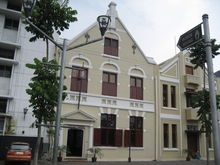
The wayang beber has strong similarities to narratives in the form of illustrated ballads that were common at annual fairs in medieval and early modern Europe. They have also been subject to the same fate – they have nearly vanished. A few scrolls of images remain from those times, found today in museums. Performances, mostly in small auditoriums, take place according to the following pattern:
The dalang gives a sign, the gamelan orchestra (or a musician with a violin-like instrument) begins to play and the Dalang unrolls a picture related to the story. Then, speaking and singing, he narrates the story in more detail. In this manner, in the course of the evening he unrolls several pictures. The pictures are shown one at a time and are successively unrolled. Each picture represents a story or part of a story. The content of the story typically stems from the Ramayana, the Mahabharata, the Jenggala stories or profane stories from other villages and kingdoms.
Wayang Sadat
This newly developed form is used by teachers of Islam to show the principles of Muslim ethics and religion to the natives of Java and Bali.
Wayang Wahyu
This form was created in the 1960s by Brother Timotheus L. Wignyosoebroto who wanted to impress the natives with the teachings of the Catholic Church. In the beginning, the puppets were often made of paper because it was less expensive than the traditional water buffalo hide. It became a popular as an alternative method of telling Bible stories.
Resources : http://encyclopedia.thefreedictionary.com/Wayang+kulit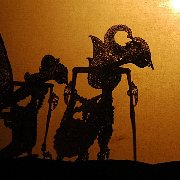
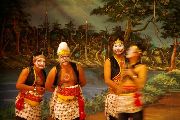
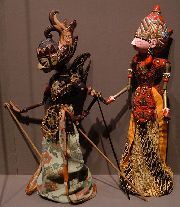
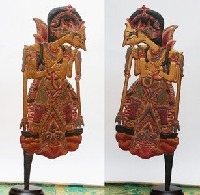
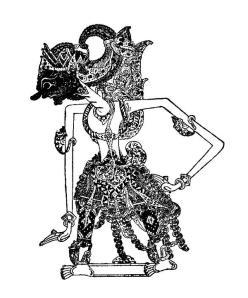

No comments:
Post a Comment